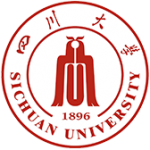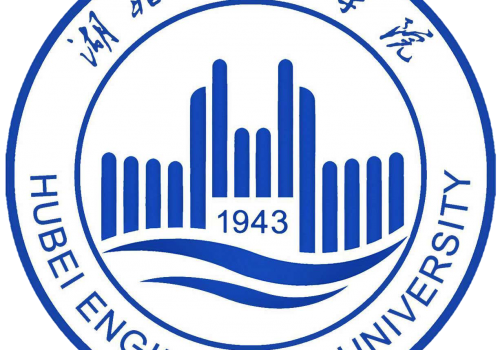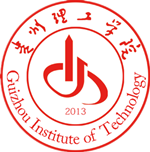About Sichuan University
Sichuan University (SCU) is one of China’s top universities, attached to the Ministry of Education. The Chairman of the University Council of Sichuan University is Wang Jianguo, and the President is Li Yanrong.
Sichuan University is located in Chengdu, a famous historical and cultural capital city of Sichuan Province, known as the land of abundance. It consists of three campuses:Wangjiang, Huaxi and Jiang’an, covering an area of 470 hectares and boasting 2.515 million square meters of floor space. The university campuses, with their favorable environment and beautiful landscape, make a wonderful place for learning and research.
Sichuan University is an institution that comprises three former national universities: the former Sichuan University, the former Chengdu University of Science and Technology, and the former West China University of Medical Sciences. The history of Sichuan University dates back to the Sichuan Chinese and Western School founded by Lu Chuanlin, Governor of Sichuan in 1896 on the orders of Emperor Guangxu. It is the earliest modern institute of higher education in Southwest China. The former Chengdu University of Science and Technology was one of the earliest multi-disciplinary engineering universities established through a restructuring program of colleges and universities. The former West China University of Medical Sciences, original West China Union University, was established by western Christian missionaries in Chengdu in 1910. It was not only one of the first universities in the western tradition, but also one of the pioneering universities to offer postgraduate programs in China.
Sichuan University has a comprehensive range of disciplines covering 12 categories: humanities, science, engineering, medicine, economy, management, law, history, philosophy, agriculture, education and art. It consists of 34 colleges, including a postgraduate college and an overseas education college. A total of 45 disciplines have been authorized by the state to grant doctoral degrees. Altogether, the university offers 354 doctoral programs, 438 master programs, 32 professional master’s programs, 138 undergraduate programs, and 37 post-doctoral research stations. It also has 46 national key disciplines and 4 national key cultivated disciplines.
Sichuan University takes pride in its large pool of prominent scholars and professors. By the end of 2016, there were 5,324 full-time teachers. Among them, there were 1,767 professors, 14 academicians of the Chinese Academy of Sciences and Chinese Academy of Engineering, 6 Outstanding Professors, 80 experts recruited through the thousand Talents Plan(including 46 through thousand Youth Talents Program and 2 through the Recruitment Program of Global Experts, 41 distinguished professors and 14 Chair professors of the Changjiang Scholars Program, 45 winners of The National Science Fund for Distinguished Young Scholars, 9 Chief Scientists of 973 Project who led 12 National Basic Research projects, 30 winners of The Key Project of The National Social Sciences Program Fund, 12 winners of the National Award for Distinguished Teachers, 11 winners of the National Innovation Talents Promotion Plan the Youth Scientific and Technological Innovation Leading Talents and 123 experts recruited from the thousand Talents Plan of Sichuan Province.
In its long history as an institution of education, Sichuan University has formed a rich cultural heritage and laid a solid foundation in education. The university’s motto is “Sea, all water, receives all rivers; Utmost wit listens to all sides”, and its spirit is embodied in the following four words: preciseness, diligence, truth-seeking and innovation.To achieve the goal of being a first-class comprehensive research-oriented university, Sichuan University has shaped, in recent years, its own concept of higher education that promotes individualism, scholarship and excellence. It has developed a new management mechanism, in which teachers conduct education activities, students function as the center of education, and colleges and departments exercise management responsibilities. The university is dedicated to providing high-quality education through an integrated multi-disciplinary approach to research and teaching which will help cultivate elite members of the society who have a profound humanity background, trustworthy expertise, a strong sense of innovation and a broad international horizon. The current student body includes approximately 37,000 undergraduate students, over 20,000 master and PhD candidates and more than 3,400 international students and students from Hong Kong, Macau and Taiwan. Since 2003, the university has been honored with 31 National Teaching Achievement Awards, 33 National Excellent Courses, 12 National Video Open Courses, 31 Collectible Resources Sharing Classes and 23 doctoral dissertations that are included in the Top 100 Excellent Doctoral Dissertations.
Sichuan University has exhibited great strength in research and made remarkable achievements over the years. It has 13 key national laboratories and engineering centers, 4 state-level international scientific and technological cooperation bases, 11 key laboratories and 6 engineering research centers under the supervision of Ministry of Education, and 3 key laboratories under the supervision of Ministry of Health. It also has 9 national centers for talent training, research and teaching, 8 National Experimental Teaching Demonstration Centers, 19 National Engineering Practice Education Centers, 3 National Experimental Teaching Center Of Virtual Simulation, 1 National Teacher Teaching Development Demonstration Center, 1 National Base of Culture-Oriented Quality Education for College Students, 9 National Off-campus Practice Education Bases for College Students, 4 key National Research Bases for Philosophy and Social Sciences, 3 National Drug Clinical Trial Institutes. Since 2005, the university has won 41 awards in three major national award categories for science and technology. In 2016, the research funding of the university increased to 1.86 billion RMB, the number of papers published ranked the 5th and the number of SCI papers ranked the 6th in China. In the field of humanities and social sciences, experts of the university compiled, edited and published several extensive collections and anthologies, including a Chinese Dictionary, The Complete Works of Song Dynasty, A History of Chinese Taoism, and Ru Zang(Collected Works of Confucianism).
Sichuan University has established contacts and cooperative relationships with over 250 renowned colleges and universities as well as research institutes from 34 countries and regions. It has established well-rounded joint education programs of at different levels and in various forms with 214 famous universities from over 33 countries, including United States, Australia and some European countries. The University has established five Confucius Institutes in collaboration with five universities in South Korea, the US and Belgium. It has set up the Jiuzhaigou International Research Center for Ecology, Environment and Sustainability in a joint effort with the University of California and the University of Washington, Sino-US Institute for University Design with Arizona State University, Sino-German Joint Center for Energy Research with Clausthal University of Technology, Western China Poverty-Reduction Research Center with the State Council Leading Group Office of Poverty Alleviation and Development, State Council Leading Group Office of Western China Development, UNDP and the World Bank, Sichuan Post-Disaster Reconstruction Support and Research Center with Hong Kong Polytechnic University and Sichuan University-Pittsburgh Institute with University of Pittsburgh.
The university libraries have a collection of over 6.65 million books and the Humanities Museum houses over 85,000 objects, the Natural Museum, over 870,000 animal and plant specimens, and the Archives and History Exhibition Center, over 280,000 volumes of historical archives (including over 9000 valuable historical archives). The university also has gymnasiums equipped with complete and advanced facilities, and other facilities and services including Campus Network, Analytical and Testing Center, Modern Education Technology Center, Intensive Language Training Center, Adult Education College and Distance Learning College.
Sichuan University (SCU) is one of China’s longest established modern universities with a history that can be traced back to the founding of Sichuan Sino-Western School in 1896, set up under the rule of Qing Dynasty Emperor, Guangxu. The current SCU was born of two mergers, first in 1994, with the former Chengdu University of Science and Technology, and then in 2000 with the former West China University of Medical Sciences.
Located in Chengdu, the culture-steeped capital of Sichuan province, SCU is a national key university under the direct administration of the Chinese Ministry of Education (MOE), and counts among the top 10 in the China University Rankings, compiled by the China University Assessment team. It has been designated for both the 211 Project and the 985 Project, and is of strategic importance in China’s western development plan. It has now set its sights on becoming one of the world’s first-class research universities.
SCU has three campuses in Chengdu, sprawling across 7,050 mu (470 hectares). It has 33 colleges, offering a comprehensive range of disciplines, covering humanities, science, engineering, management, medicine, law, agriculture, education and arts. It is authorized by the state to grant doctoral degrees in 44 disciplines. According to Thomson Reuters’ Essential Science Indicators (ESI), 13 of its disciplines are ranked among the global top 1% and chemistry is ranked among top 1‰globally. With 5,238 full-time faculty members, including 1,051 full professors, 1,230 associate professors and 15 members of the Chinese Academy of Sciences (CAS) and the Chinese Academy of Engineering (CAE), the university is enhancing its strengths in education and research, broadening international collaboration, and making greater social impacts. It has become a major driver of the socioeconomic development in western China.
Sichuan University is one of the earliest institutions of higher education in China. Its earliest predecessor was the Sichuan Chinese and Western School (四川中西學堂), a school established in 1896 that combined traditional and modern methods of education. In 1902, it was merged with two traditional Chinese academies, the Jinjiang Shuyuan (錦江書院, founded 1740) and the Zunjing Shuyuan (尊經書院, founded 1875), and became known as the Sichuan Higher School (四川高等学堂, later 四川高等学校). In 1916, after another merger with a normal school, it was renamed the National Chengdu Higher Normal School (國立成都高等師範學校). In the late 1920s, the institution was briefly divided into three universities, namely the National Chengdu University, the Chengdu Normal University and the Public Sichuan University. In 1931, however, they were reintegrated to form the National Sichuan University (國立四川大學). By 1949, the National Sichuan University had been developed into one of the largest multidisciplinary universities in China, with arts, science, engineering, agriculture, law, and normal schools and a total of 25 departments.
After the foundation of the PRC, the name was changed to Sichuan University. In the 1950s, the national “adjustment of colleges and departments” (院系调整) was organized, after which SCU specialized in arts and science. The schools of engineering and agriculture was mostly split off to form two new universities: the Engineering Institute of Chengdu (成都工学院) and the Sichuan Institute of Agriculture. The normal school was merged into Southwest Normal University and Sichuan Teachers College. The school of law became part of the Southwest College of Political Science and Law. A number of departments in agriculture was transferred to the Southwest Institute of Agriculture, while the department of aeronautics was affiliated under the Beijing Institute of Aeronautics.
The north gate of Wangjiang Campus of SCU, taken on 17, Oct 2015
Engineering Institute of Chengdu, established in 1954, specialized in chemical engineering, hydroelectricity, mechanics, textiles, and light industry. In 1978, it was renamed to Chengdu University of Science and Technology (CUST).
The West China School of Medicine was originally founded as a private medical school, known as West China Union College. It became a public university after the foundation of the PRC, being renamed to Sichuan Medical College in 1953 and West China University of Medical Science (WCUMS) in 1985. It was established in 1910 by five Christian missionary groups from the U.S., UK and Canada, with offered courses in stomatology, biomedicine, basic medicine and clinical medicine.
In 1994, the SCU, CUST and WCUMS merged to form the Sichuan Union University (四川联合大学). The university adopted the current name in 1998.
Today, Sichuan University is the largest and most comprehensive university in Western China. SCU grants doctorates in twelve main disciplines and 111 subordinate disciplines. It also has six professional degree programs, and has 16 disciplines for postdoctoral research. The 109 bachelor’s degree programs SCU grants cover the main fields in liberal arts, sciences, engineering, medicine and agriculture. Its current student population is more than 70,000.
Sichuan University has been listed on the Entity List of the United States Department of Commerce’s Bureau of Industry and Security since 2012 due to the Sichuan University Institute of Nuclear Science and Technology’s involvement in nuclear weapons development.
Sichuan University has a current total staff of 11,357, among which 1,323 are professors, 2,345 associate professors, 13 academicians of Chinese Academy of Sciences and Chinese Academy of Engineering, 434 PhD Supervisors, and 17 members of the Academic Degrees Committee and the Discipline Appraisal Group under the State Council. SCU has 23 professorships from the Yangtze River Scholar Award Plan (9 lecture professor).
Sichuan University is one of the members of Project 985 (Top Type) and it is one of only two universities in Western China region (alongside Xi’an Jiao tong University) ranking among the top-15 comprehensive research universities nationwide.[6] It is consistently ranked # 1 in Southwest China, which comprises Chongqing Municipality, Sichuan Province, Guizhou Province, Yunnan Province, and Tibet Autonomous Region with a combination of more than 180 million population.[7]
Internationally, Sichuan University is regarded as one of the most reputable Chinese universities by the Times Higher Education World Reputation Rankings where, it ranked 61st globally as of 2022.[8]
As of 2022, Sichuan University was ranked #101-150 band by Academic Ranking of World Universities and #304 globally by U.S. News & World Report Best Global University Ranking.[9][10]
Global Ranking of Sichuan University by U.S. News & World Report Best Global University Ranking







